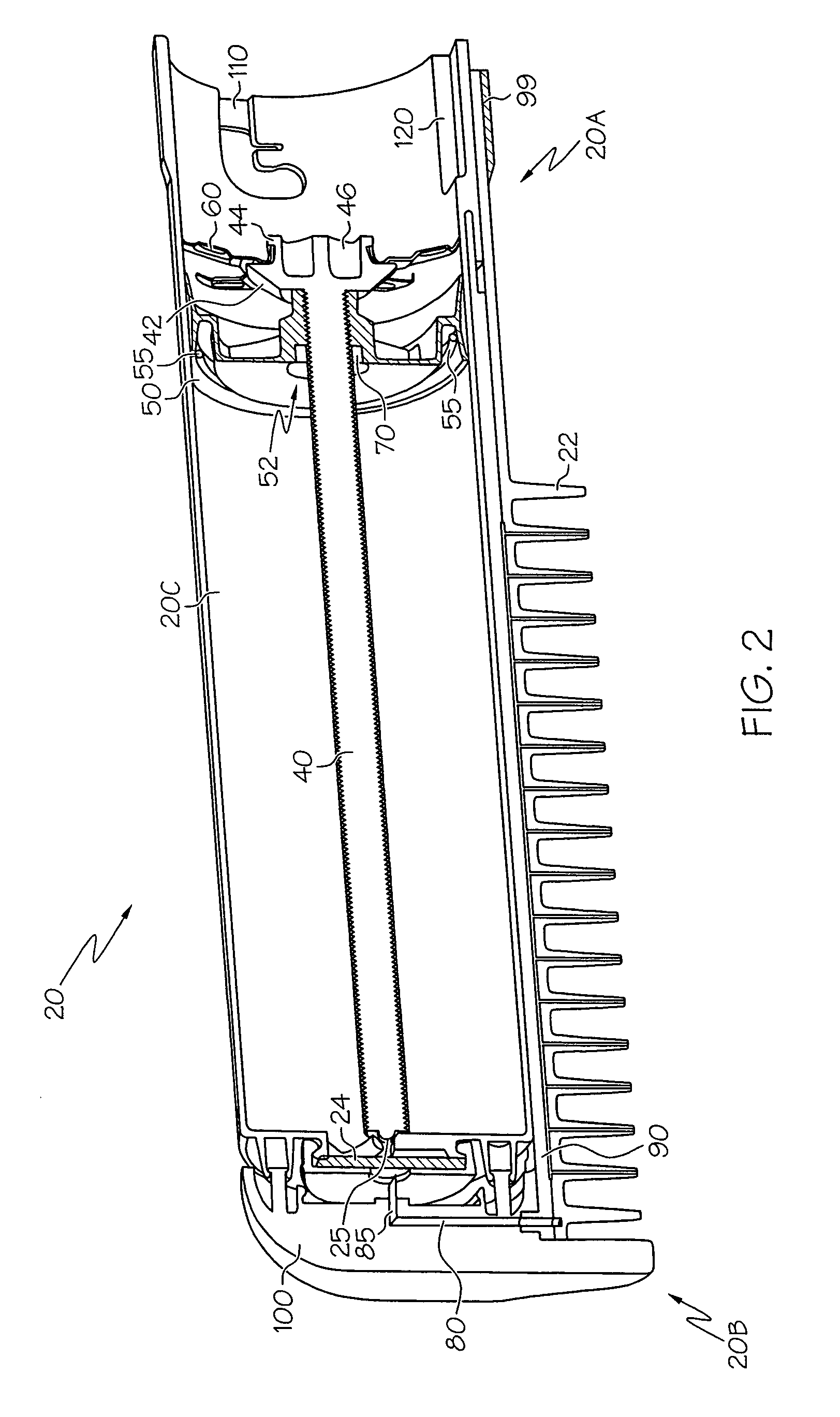Handheld sprayer with removable cartridge and method of using same
a sprayer and cartridge technology, applied in the field of devices, can solve the problems of inability to carry out the operation of the sprayer through the user, etc., to achieve the effect of convenient grounding of the spray device through the user, improving balance, and enhancing the ergonomic features of the spray devi
- Summary
- Abstract
- Description
- Claims
- Application Information
AI Technical Summary
Benefits of technology
Problems solved by technology
Method used
Image
Examples
Embodiment Construction
[0041]Referring first to FIGS. 1 and 13, a sprayer 10 includes a handle 26, a cartridge interface 29 and fluid-containing cartridge 20. An array of nozzles 22 are situated beneath cartridge 20, and are in fluid communication therewith to dispense a fluid. The handle 26 is used to house a power supply 12, a converter (also referred to as an electronics or circuit board) 14, a motor 16, a drive mechanism 18 and driver 19, and a high voltage multiplier 30 (also referred to as a voltage multiplier circuit). In the present context, the term “high voltage” and its variants is used to represent increases in voltage over that provided by the power supply 12 due to the operation of the voltage multiplier 30, rather than as indicia of a particular voltage level. By way of example, for a voltage measured at the output of the power supply 12 of six volts, a voltage of thousands of volts measured at the output of the voltage multiplier 30 would constitute a high voltage. The power supply 12 may ...
PUM
 Login to View More
Login to View More Abstract
Description
Claims
Application Information
 Login to View More
Login to View More - R&D
- Intellectual Property
- Life Sciences
- Materials
- Tech Scout
- Unparalleled Data Quality
- Higher Quality Content
- 60% Fewer Hallucinations
Browse by: Latest US Patents, China's latest patents, Technical Efficacy Thesaurus, Application Domain, Technology Topic, Popular Technical Reports.
© 2025 PatSnap. All rights reserved.Legal|Privacy policy|Modern Slavery Act Transparency Statement|Sitemap|About US| Contact US: help@patsnap.com



